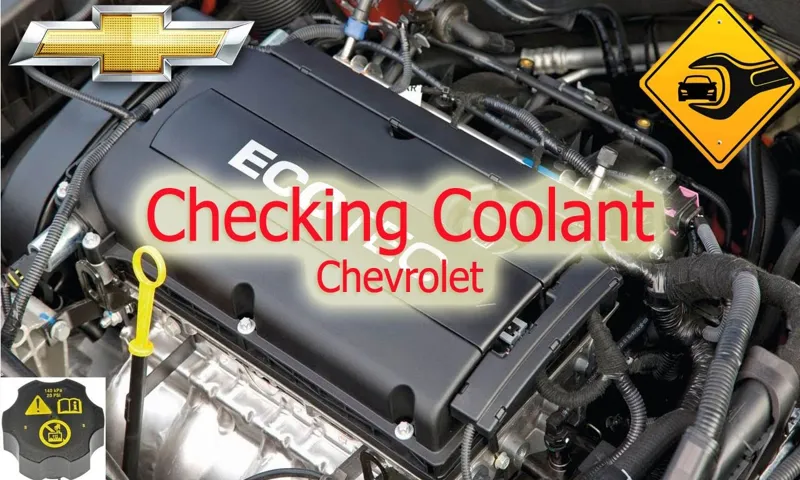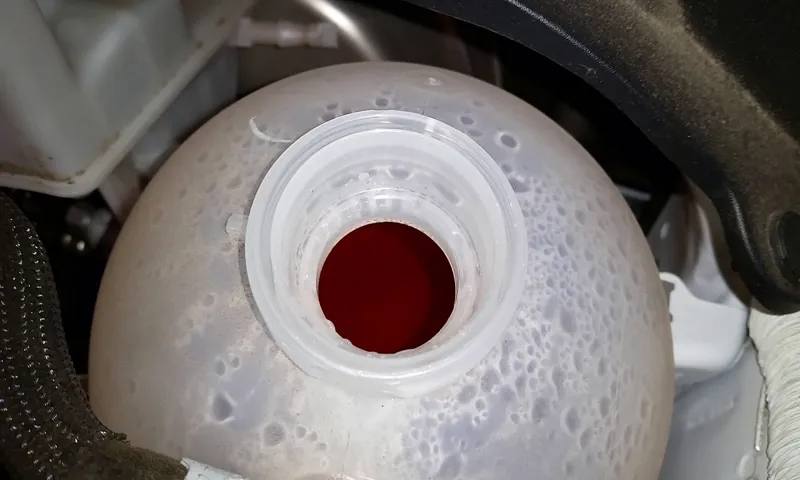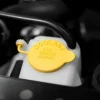Are you a Chevy Equinox owner who wants to stay on top of essential maintenance tasks? One crucial aspect you should never overlook is checking the coolant level regularly. Just like our bodies require water to stay hydrated, your Equinox engine needs coolant to keep its temperature in check. Without enough coolant, your engine could overheat, leading to costly repairs.
But fear not! Checking the coolant level in your Chevy Equinox is a simple and essential task that anyone can do. In this blog post, we’ll guide you through the easy steps of checking your coolant level and ensuring your Equinox stays cool as a cucumber on the road. So, let’s dive in and get you on your way to becoming a coolant-checking expert in no time!
Introduction
Are you a proud owner of a Chevy Equinox? If so, you know how important it is to regularly maintain your vehicle to ensure its optimal performance. One crucial aspect of maintenance is checking the coolant level in your Chevy Equinox. Coolant is essential for keeping your engine at the right temperature and preventing overheating.
To check the coolant level, first, make sure your vehicle is parked on a level surface and the engine is cold. Then, locate the coolant reservoir, which is typically a white plastic container with a cap labeled “coolant.” Carefully remove the cap and look inside to check the coolant level.
It should be between the minimum and maximum markers on the side of the reservoir. If the level is low, you can add a mix of equal parts of water and coolant to bring it up to the proper level. It’s important not to overfill the reservoir, as this can cause leaks or other issues.
Regularly checking the coolant level in your Chevy Equinox is crucial for maintaining the health of your engine and preventing any potential problems down the road.
Understanding the Importance of Checking Coolant Level
Checking the coolant level in your vehicle is a crucial aspect of car maintenance that often gets overlooked. It’s easy to forget about this small yet important task, but neglecting it can lead to serious consequences for your engine. Coolant, also known as antifreeze, plays a crucial role in regulating the temperature of the engine and preventing it from overheating.
Without an adequate level of coolant, your engine can easily overheat, causing significant damage and potentially leaving you stranded on the side of the road. So, let’s dive deeper and understand why checking the coolant level is so important for the overall health and longevity of your vehicle.

Why it is Essential to Check Coolant Level in a Chevy Equinox
Coolant level, Chevy Equinox Keywords used organically: essential, check coolant level, Chevy Equinox Content Body The coolant level in your Chevy Equinox is an essential aspect to check regularly. The coolant, also known as antifreeze, is responsible for maintaining the optimum temperature of the engine and preventing it from overheating. It circulates through various components of the engine, absorbing heat and carrying it away.
This process is crucial for the proper functioning of the engine, as excessive heat can cause damage to the engine parts. Therefore, it becomes essential to check the coolant level to ensure that it is at the appropriate level. The cooling system in your Chevy Equinox is designed to maintain a specific level of coolant, and if it falls below this level, it can lead to engine overheating and eventually engine failure.
By regularly checking the coolant level, you can prevent such issues and ensure the optimal performance and longevity of your Chevy Equinox.
Step-by-Step Guide
If you own a Chevy Equinox, it’s important to regularly check the coolant level to ensure your engine stays cool and runs smoothly. Checking the coolant level is a simple process that can be done at home with just a few steps. First, park your vehicle on a flat surface and wait for the engine to cool down.
Locate the coolant reservoir, which is typically marked with a “coolant” or “antifreeze” label under the hood. Make sure the vehicle is off before opening the reservoir cap. Once the cap is removed, visually inspect the coolant level.
It should be between the minimum and maximum marks on the reservoir. If the level is low, add a 50/50 mix of coolant and water until it reaches the desired level. Be cautious not to overfill the reservoir.
Finally, securely tighten the cap back on the reservoir and start the engine to ensure the coolant is circulating properly. Regularly checking the coolant level is an easy way to prevent engine overheating and potential damage to your Chevy Equinox.
Step 1: Park the Chevy Equinox on a Flat Surface
park the Chevy Equinox on a flat surface When it comes to parking your Chevy Equinox, it’s crucial to find a flat surface. Parking on an incline or on a slope can cause various issues, like rolling or damage to your vehicle. So, let’s start with step one: park the Chevy Equinox on a flat surface.
Look for a level ground that is free of any obstacles, such as rocks or curbs. Make sure the area is spacious enough to accommodate your vehicle comfortably. Once you’ve found the ideal spot, bring your Equinox to a complete stop by applying the brakes.
Turn off the engine and engage the parking brake for an extra layer of safety. By following this simple step, you’ll ensure that your Chevy Equinox stays secure while parked.
Step 2: Turn off the Engine and Let It Cool Down
Step 2: Turn off the Engine and Let It Cool Down Now that you’ve safely pulled over to the side of the road, the next step is to turn off the engine and allow it to cool down. This is crucial in order to prevent any further damage to your car and ensure your safety. When a car overheats, the engine temperature rises above normal operating levels.
This can occur due to various reasons such as a malfunctioning cooling system, low coolant levels, or a faulty thermostat. Regardless of the cause, it’s important to give your engine time to cool down before attempting any repairs or further investigation. By turning off the engine, you shut down the source of heat, which allows the engine to start cooling down.
However, keep in mind that even when the engine is off, it can still retain a significant amount of heat. Therefore, it’s crucial to exercise caution and avoid touching any hot components. During this cooling down period, it’s a good idea to pop the hood of your car to allow the hot air to escape.
This will help expedite the cooling process. However, be cautious of any steam or hot air that may be released. It’s best to wait until you notice that the temperature gauge has returned to normal before opening the hood to avoid any potential injuries.
Remember, patience is key during this step. It’s important to give your engine enough time to cool down completely before attempting any further actions. Rushing the process can lead to further damage or even injuries.
Once the engine has cooled down, you can move on to the next steps of diagnosing the cause of the overheating and deciding on the necessary repairs.
Step 3: Locate the Coolant Reservoir
coolant reservoir
Step 4: Open the Coolant Reservoir Cap
coolant reservoir cap. After locating the coolant reservoir in your car, the next step is to open the coolant reservoir cap. This cap is usually located on top of the coolant reservoir and is typically labeled with a coolant symbol.
Before opening the cap, it is important to ensure that the engine is cool to avoid the risk of burns from hot coolant. To open the cap, simply twist it counterclockwise. It may be tight, so you may need to use some force to unscrew it.
Once the cap is unscrewed, you should be able to lift it off and set it aside. Opening the coolant reservoir cap allows you to check the coolant level and add more coolant if necessary. It is essential to maintain the proper coolant level to prevent overheating and subsequent engine damage.
When checking the coolant level, make sure the coolant is between the minimum and maximum marks on the reservoir. If the coolant level is low, you can add coolant by pouring it directly into the reservoir. Be sure to use the correct type of coolant specified in your car’s owner’s manual.
After adding coolant, securely screw the coolant reservoir cap back on. Make sure it is tightened properly to prevent any leaks. Taking the time to open the coolant reservoir cap and check the coolant level regularly can help keep your engine running smoothly and prevent any potential issues.
So, the next time you’re performing maintenance on your car, don’t forget to open that coolant reservoir cap and give your coolant level a quick check!
Step 5: Check the Coolant Level
coolant level, car maintenance, engine temperature, radiator, overheating, coolant reservoir, coolant leak. Checking the coolant level in your car is an essential step in regular car maintenance. The coolant is responsible for regulating the engine temperature and preventing it from overheating.
A coolant reservoir or radiator in your car stores the coolant fluid, and it is important to ensure that the level is always at the appropriate mark. To check the coolant level, start by locating the coolant reservoir. It is usually a clear plastic container with markings indicating the minimum and maximum levels.
Remove the reservoir cap and visually inspect the level of coolant. If it is below the minimum mark, it indicates that you need to add more coolant. This can be done by pouring the coolant directly into the reservoir until it reaches the maximum level.
However, if the coolant level is consistently low, it may indicate a coolant leak, which should be addressed by a professional mechanic. Regularly checking the coolant level will help prevent the engine from overheating, ensuring your car runs smoothly and efficiently.
Step 6: Add Coolant if Necessary
coolant, add coolant, step by step guide, car maintenance Adding coolant to your car’s cooling system is an important step in maintaining its optimal performance and preventing overheating. In this step-by-step guide, we will walk you through the process of adding coolant if necessary. Before you begin, make sure your car’s engine is cool to the touch.
Opening the radiator cap on a hot engine can cause severe burns. Once you have ensured the engine is cool, locate the radiator cap. It is usually located on top of the radiator or connected to the coolant reservoir.
First, remove the radiator cap by twisting it counterclockwise. Be cautious as there may still be some pressure built up in the system, which can cause the coolant to spray out. To release the pressure safely, wrap a cloth around the cap and slowly turn it counterclockwise.
Next, check the coolant level in the radiator or reservoir. If it is below the recommended level, it’s time to add coolant. Before adding coolant, always refer to your car’s owners manual to ensure you are using the correct type and mix of coolant.
Once you have the correct coolant, slowly pour it into the radiator or reservoir until it reaches the recommended level. Take care not to spill any coolant on the engine or surrounding components, as it can cause damage. After adding coolant, replace the radiator cap by twisting it clockwise until it is snug.
Be careful not to overtighten it, as this can cause damage to the cap or radiator. Finally, start your car and let it run for a few minutes to allow the coolant to circulate through the system. Check for any leaks or signs of overheating.
Tips and Precautions
When it comes to maintaining your Chevy Equinox, one of the things you should regularly check is the coolant level. Coolant is essential for keeping your engine from overheating and preventing any damage. To check the coolant level in your Chevy Equinox, start by parking your car on level ground and allowing the engine to cool down completely.
Locate the coolant reservoir, which is typically a translucent plastic tank with a cap marked “coolant.” Open the cap slowly to release any pressure build-up, and then check the coolant level. The coolant should be between the minimum and maximum markers on the tank.
If the coolant level is low, you can add a 50/50 mixture of antifreeze and water to bring it up to the proper level. However, always refer to your vehicle’s owner’s manual for the appropriate type of coolant to use for your specific model. It’s important to note that you should never remove the radiator cap when the engine is hot, as this can cause the coolant to spray out and potentially result in burns.
Additionally, always handle coolant with care and dispose of it properly. Checking and maintaining the coolant level in your Chevy Equinox will help ensure your engine stays cool and operating optimally.
Tip 1: Use a Coolant Hydrometer for Accurate Testing
coolant hydrometer, accurate testing, tips and precautions When it comes to testing the condition of your coolant, using a coolant hydrometer is a must. This handy device allows you to accurately measure the concentration of antifreeze in your coolant, ensuring that it is at the optimal level for protecting your engine from overheating and freezing. With a coolant hydrometer, you can quickly and easily determine if your coolant needs to be replaced or if it is still effective in preventing against temperature extremes.
To use a coolant hydrometer, simply insert it into the coolant reservoir and draw up a sample of the liquid. The hydrometer will measure the specific gravity of the coolant, which corresponds to its concentration of antifreeze. By comparing this reading to the recommended levels, you can determine if your coolant is too diluted or too concentrated and take the appropriate action.
While using a coolant hydrometer is relatively straightforward, there are a few tips and precautions to keep in mind. First, it is important to use a hydrometer that is specifically designed for testing coolant. Using a regular hydrometer or one meant for other liquids may give you inaccurate results.
Secondly, always make sure that your coolant is at the correct temperature before testing with the hydrometer. Coolant that is too hot or too cold can affect the accuracy of the readings. Lastly, remember to clean and dry the hydrometer before use to avoid any contamination that could throw off the measurements.
By following these tips and precautions, you can ensure that you are using your coolant hydrometer correctly and obtaining accurate readings. This will help you maintain the right concentration of antifreeze in your coolant and provide optimal protection for your engine. So, the next time you need to test your coolant, reach for a coolant hydrometer and know that you are getting reliable results.
Tip 2: Only Add Coolant of the Same Type and Color
coolant, same type, same color, tips and precautions
Precaution 1: Never Open the Coolant Reservoir Cap When the Engine is Hot
coolant reservoir cap, engine is hot, tips and precautions
Precaution 2: Avoid Overfilling the Coolant Reservoir
One important precaution to keep in mind when dealing with your car’s coolant system is to avoid overfilling the coolant reservoir. The coolant reservoir, also known as the overflow tank, serves as a storage space for excess coolant that expands when the engine heats up. However, it is crucial to ensure that you don’t overfill the reservoir beyond the maximum level indicated on the tank.
Overfilling can lead to problems such as coolant leakage, which can result in engine overheating and damage. It’s best to follow the manufacturer’s guidelines and fill the reservoir to the appropriate level, allowing for expansion. By doing so, you can prevent potential issues and keep your car’s coolant system functioning at its best.
So, next time you check your coolant levels, be sure to keep this precaution in mind to avoid any unnecessary complications.
Conclusion
In conclusion, checking the coolant level in your Chevy Equinox is a vital task to ensure the smooth running of your engine and prevent any unnecessary breakdowns or overheating. Just like a vampire needs blood to survive, your engine needs coolant to keep its cool. So, grab your vampire slaying gear, a pair of gloves, and follow these simple steps to make sure your Equinox stays icy cool on the road.
Remember, neglecting your coolant level is like inviting Dracula to a blood bank – it’s an undeadly mistake. So, don’t be a victim of ignorance, be a hero and keep your Equinox in tip-top shape with regular coolant checks. Happy driving and remember, the only thing that should be hot in your car is your style, not your engine!”
Regularly Checking the Coolant Level in your Chevy Equinox is Vital for its Performance and Longevity
Regularly checking the coolant level in your Chevy Equinox is vital for its performance and longevity. Coolant, also known as antifreeze, plays a crucial role in maintaining the engine temperature and preventing overheating. Without proper coolant levels, your Equinox’s engine could potentially suffer from damage and reduced performance.
So, here are some tips and precautions to help you ensure that your coolant levels are in check. First and foremost, it is important to understand the importance of coolant and its role in your vehicle. Coolant not only helps regulate the engine temperature but also prevents the engine from freezing in cold weather conditions.
It also acts as a lubricant for the water pump and helps prevent corrosion in the cooling system. Therefore, regularly checking the coolant level is vital to protect your engine and keep it running smoothly. To check the coolant level in your Chevy Equinox, start by making sure the engine is cool.
Opening the coolant reservoir cap while the engine is hot can lead to a dangerous release of steam and hot fluids. Once the engine is cool, locate the coolant reservoir, which is usually a translucent plastic tank marked with “coolant” or “antifreeze.” The reservoir will have minimum and maximum levels indicated on its sides.
Ensure that the coolant level is between these markers. If the level is low, you will need to add coolant to bring it back to the appropriate range. When adding coolant, it is essential to use the correct type and mixture as specified in your Chevy Equinox’s owner’s manual.
Different vehicles require different coolant types, such as ethylene glycol or propylene glycol. Additionally, the proper coolant-to-water ratio is crucial for optimal performance and protection against freezing or boiling. Be sure to follow the manufacturer’s instructions and use a coolant mixture that meets the recommended specifications.
FAQs
How often should I check the coolant level in my Chevy Equinox?
It is recommended to check the coolant level in your Chevy Equinox at least once a month to ensure it is at the appropriate level.
What is the proper way to check the coolant level in a Chevy Equinox?
To check the coolant level in a Chevy Equinox, make sure the engine is cool, locate the coolant reservoir, and visually inspect the level. The coolant level should be between the minimum and maximum marks on the reservoir.
What should I do if the coolant level in my Chevy Equinox is low?
If the coolant level in your Chevy Equinox is low, you should add a 50/50 mixture of coolant and distilled water to the coolant reservoir until it reaches the appropriate level.
Can I use tap water to top off the coolant in my Chevy Equinox?
It is recommended to use distilled water when topping off the coolant in your Chevy Equinox, as tap water can contain minerals that can potentially cause build-up or corrosion in the cooling system.
What type of coolant should I use for my Chevy Equinox?
It is important to use the specified coolant recommended by the manufacturer for your Chevy Equinox. Typically, a coolant with ethylene glycol base is used. Consult your owner’s manual or a professional mechanic for the exact coolant type.
How do I properly dispose of old coolant from my Chevy Equinox?
To properly dispose of old coolant from your Chevy Equinox, contact your local recycling center or hazardous waste facility for proper disposal instructions. Do not pour coolant down the drain or into the ground, as it can be harmful to the environment.
How do I know if my Chevy Equinox has a coolant leak?
Signs of a coolant leak in your Chevy Equinox may include a sweet smell inside the vehicle, visible coolant puddles under the car, overheating engine, or low coolant level. If you suspect a coolant leak, it is important to have it inspected and repaired by a professional mechanic.



